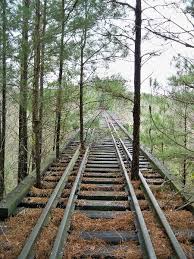In 2011 the Tennessee Valley Railroad Museum had their first annual Railfest. Of course the highlight was Norfolk Southern's first mainline excursion in about twenty years. The other notable event was on the last day of the event, the remains of Hurricane Lee, by then Tropical Storm Lee, hit the Tennessee Valley Railroad Museum and caused a downpour. There was a special Chickamauga Turn from Chattanooga to Chickamauga and back. Leading the train south (to Chickamauga) was Southern FP7 #6133, owned by the North Carolina Transportation Museum and was one of two special guests at Railfest, the other being the grand premiere of the Gramling's Lehigh Valley Coal Company 0-6-0T #126, called Sadie. On the return trip from Chickamauga, Southern GP30 #2594, on loan from the Southeastern Railway Museum, lead the train, with 6133 on the rear, because there is not a turntable in Chickamauga. There were plans for several photo run-bys, but they were cancelled due to the rain, so we would arrive two hours earlier than planned, 4PM instead of 6PM. On the return trip, the train was stopped by a tree that fell on the tracks. Here's where things get interesting: Normally the crew has a chainsaw on board in case something like this happens, but they forgot to put it on the train before leaving the Tennessee Valley Railroad Museum. We had to wait for a person from Lafayette (where the office for the Chattanooga & Chickamauga (the railroad the Tennessee Valley Railroad Museum runs its excursions on) is located and further south of Chickamauga) to get up to us and cut up the tree so we could continue on back to Chattanooga. After waiting for two hours, a guy came along, cut up the tree, and we were on our way back to Chattanooga. We arrived back at the Tennessee Valley Railroad Museum at 6PM, when we were originally planned to return.

